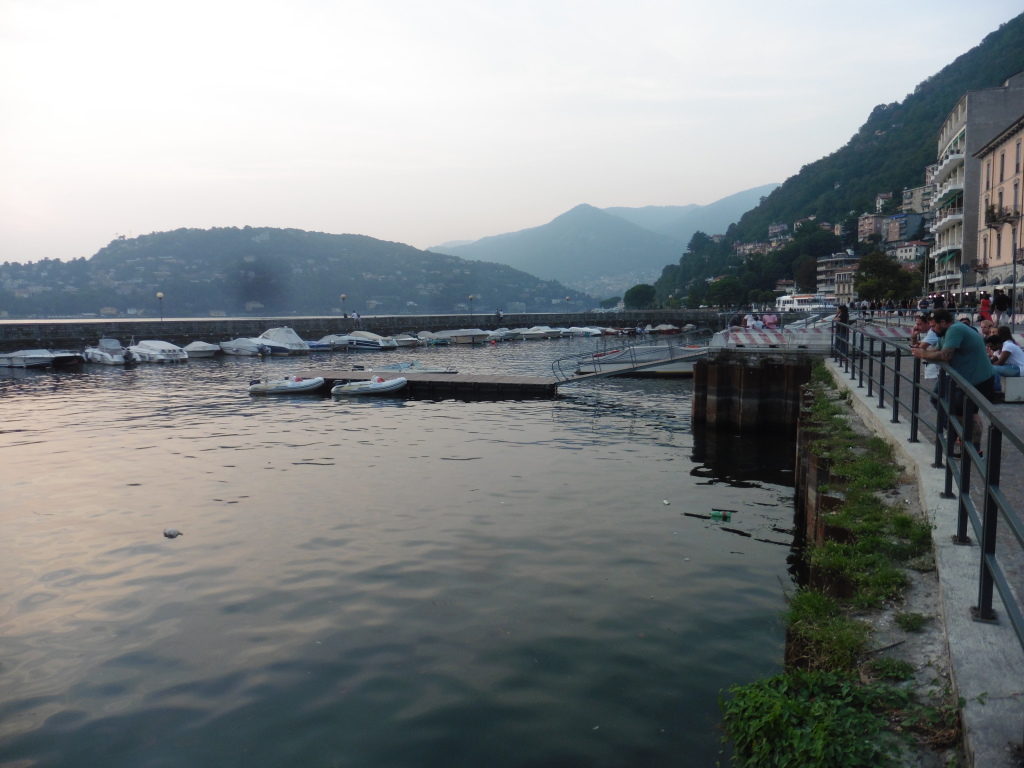The European Conference on Service-Oriented and Cloud Computing (ESOCC) is among the most recognised community-run venues to discuss technological advances among researchers and practitioners. Its 7th edition (ESOCC 2018) just took place in Como, Italy, and we were participating for three reasons: to present a paper on migrating multi-container applications between clouds, to sense new challenges ahead especially in the cloud-native space, and to connect stronger to fellow researchers from across the continent.
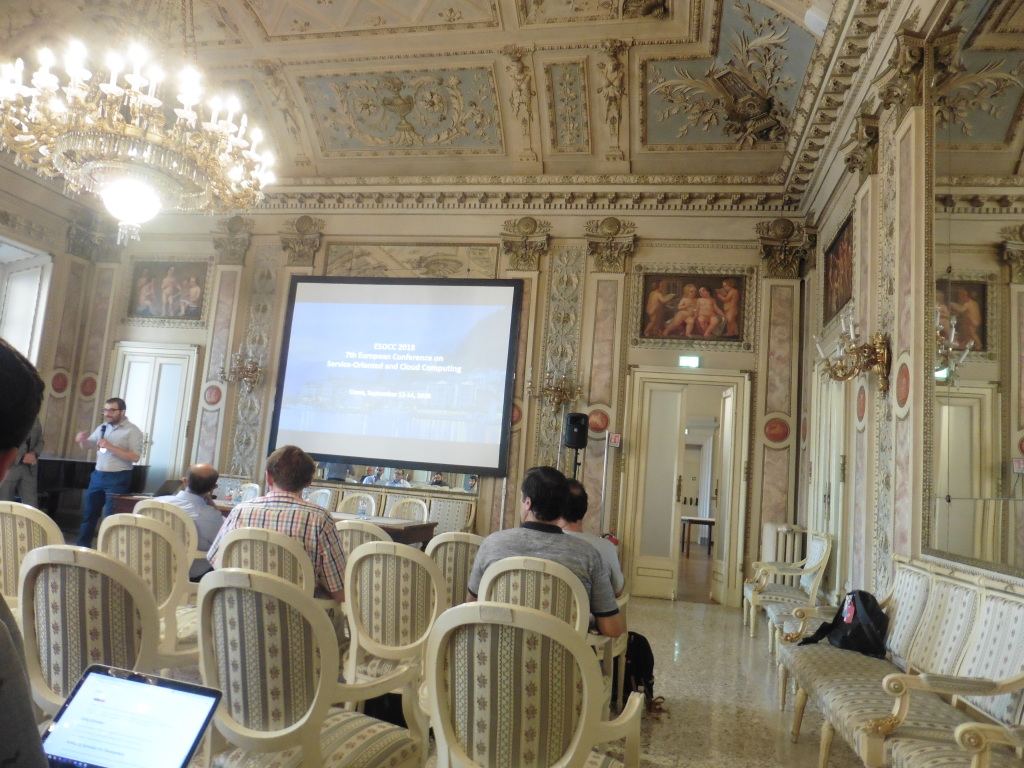
The conference atmosphere was fully determined by the venue, the 19th century Teatro Sociale in Como with its Sala Bianca, but also as usual by the inspiration gained from the keynotes. The first invited talk was held by Inria’s Valerie Issarny who informed about a complex crowdsensing setup involving noise sensors on mobile phones connected to the cloud. It confirmed the need for privacy-preserving decentralised sensor data processing solutions, something we looked into with our stealth computing research.
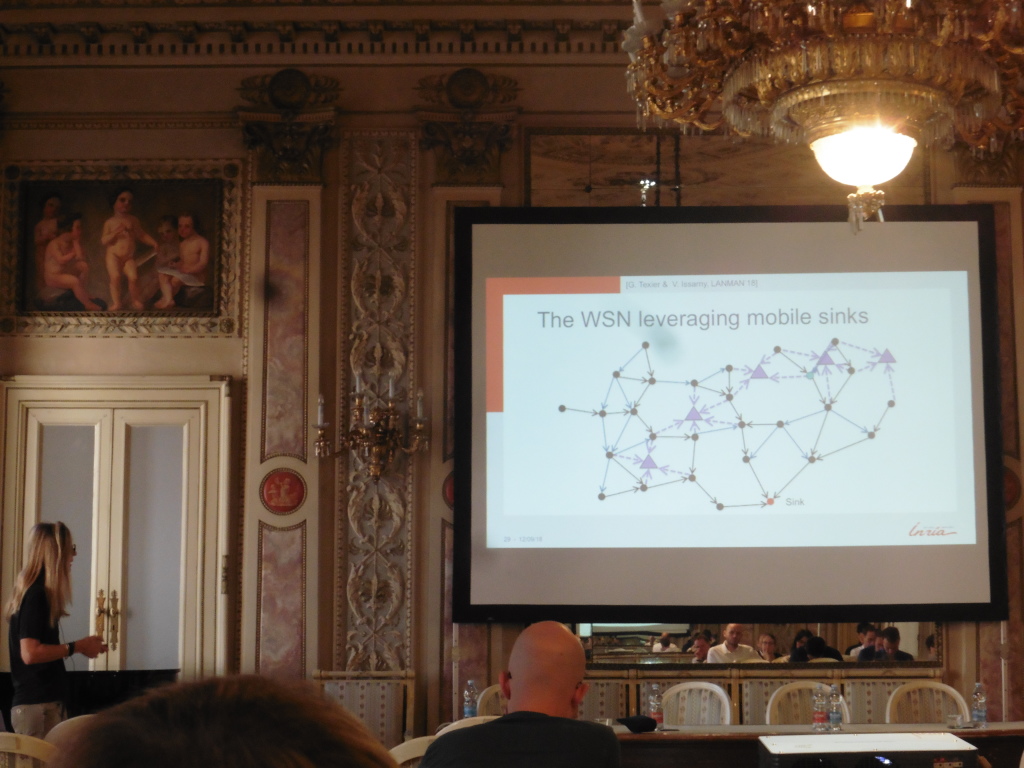
The second invited talk was given by Omer Rana from Cardiff University who summarised the ongoing debates on edge clouds while triggering discussions on dominant market players in data/content distribution and computing. Several points are still not fully clear, including the use of cloud functions, the policy vs. mechanism decisions on reverse offloading from the cloud into the edge along with the proper handling of a continuum, the programmatic access to developers and the right level of rethinking architectures.
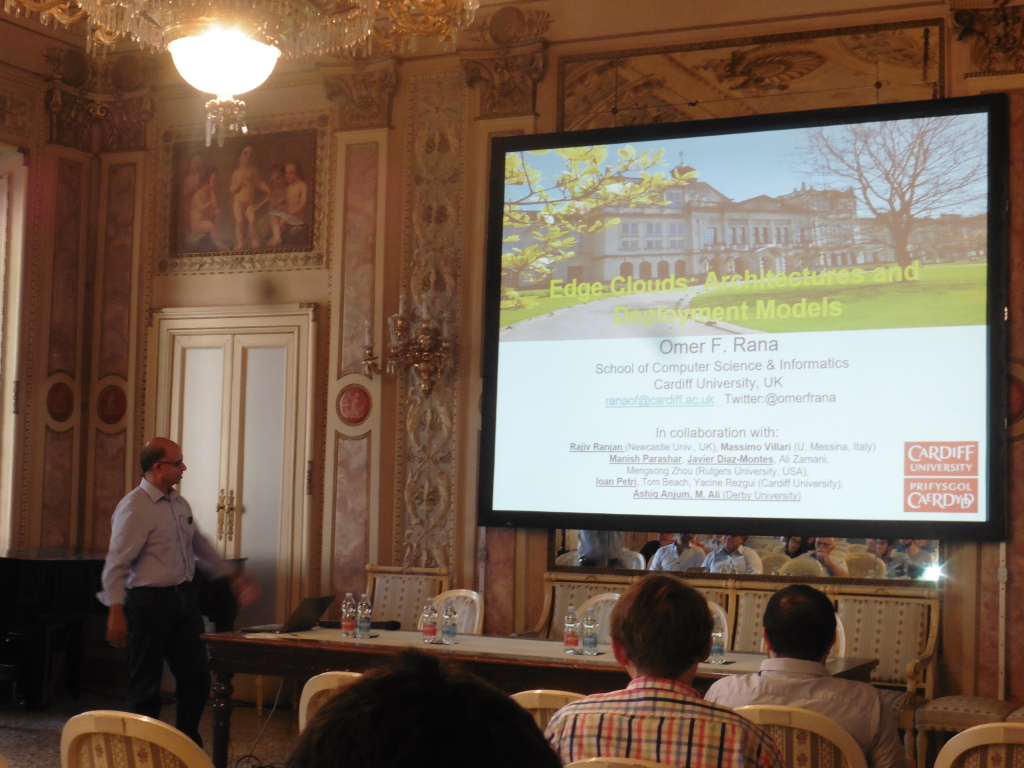
As the conference was preceded by several smaller workshops, we submitted our paper on migrating applications between inhomogeneous Kubernetes, OpenShift (now OKD) and Docker Compose platforms to the CloudWays workshop that specifically focuses on migration aspects in both senses of the word. Along with our paper (see research outputs), several others discussed microservices, containerised applications and cloud functions, all of which are topics of interest to us and, by extension, to innovation-seeking companies in Switzerland. On several occasions, the link between microservices, object orientation, components and the general art of software engineering became apparent. One paper revealed for instance that developers intuitively see service-oriented software as more loosely coupled, while the actual degree of coupling depends on many factors including the skills and rigor of the developers.
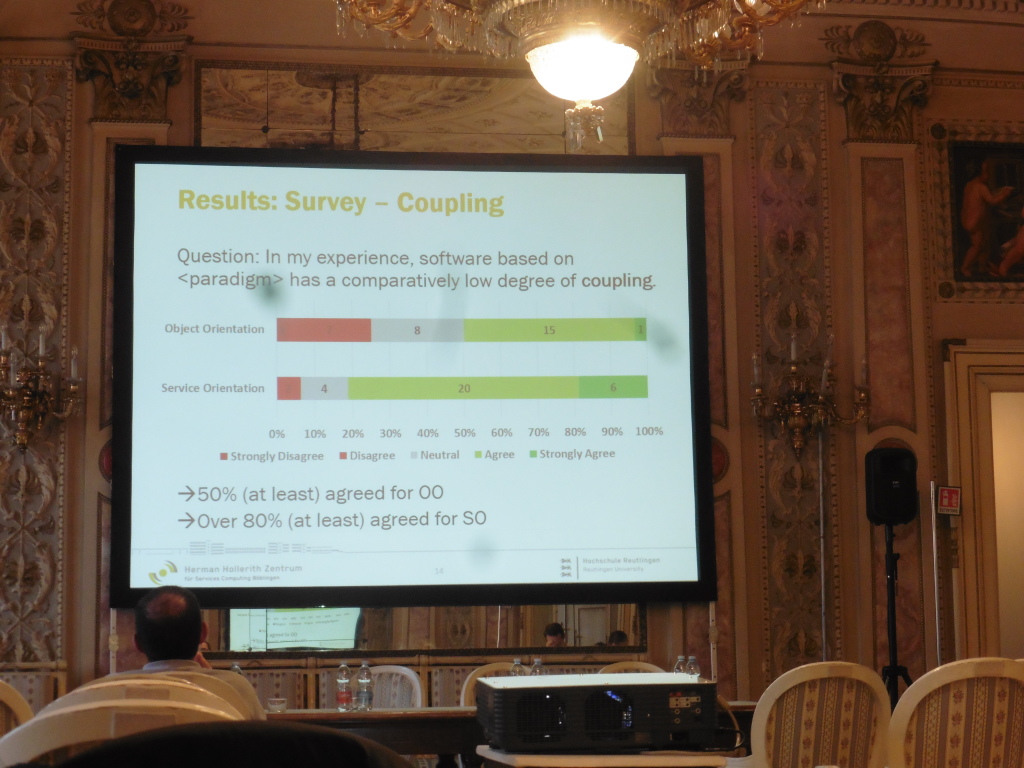
It will not be possible to report on all talks, but some were particularly impressive. Timon Back and Vasilios Andrikopoulos have started to look into commercial FaaS providers and, while we know a lot about their characteristics now, found additional insights into improper out-of-memory error reporting, delayed memory-proportional compute acceleration, and pricing. Cesare Pautasso and Erik Wilde propose monitorable API labelling which resembles in part our previous work on (independently verifiable) metaquality of services. Antonio Brogi et al. looked into Docker container orchestrators. As Docker images are not necessarily revealing information about services provided through them, TOSCA documents which can be partly auto-generated by scanning the containers can assist in getting the orchestration right.
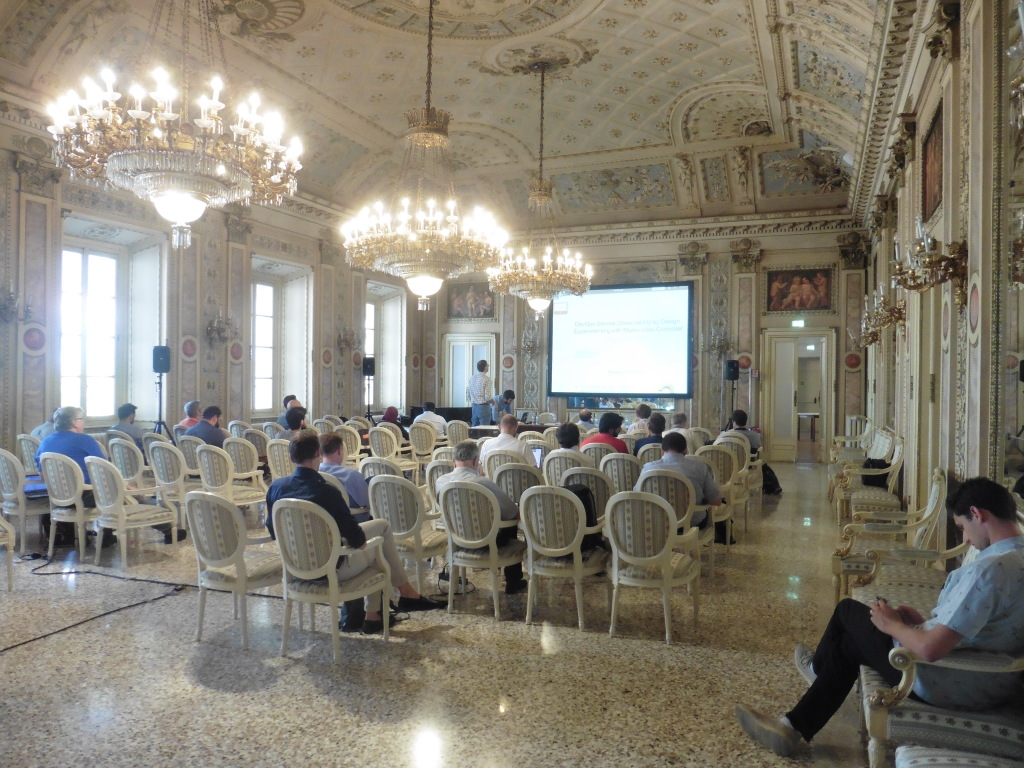
In total, the conference was made up of four tracks and three workshops of which we attended almost all apart from the PhD symposium (although we do offer cooperative PhD positions and hope to have something to show next year) and the European project track, which will be attended by our friends from ICCLab who will present results from the ongoing Elastest project. Despite annoying issues with Internet access in the venue this year, or perhaps supported by this situation, ESOCC is clearly a recommended venue to communicate research results and hammer out plans for upcoming research.
